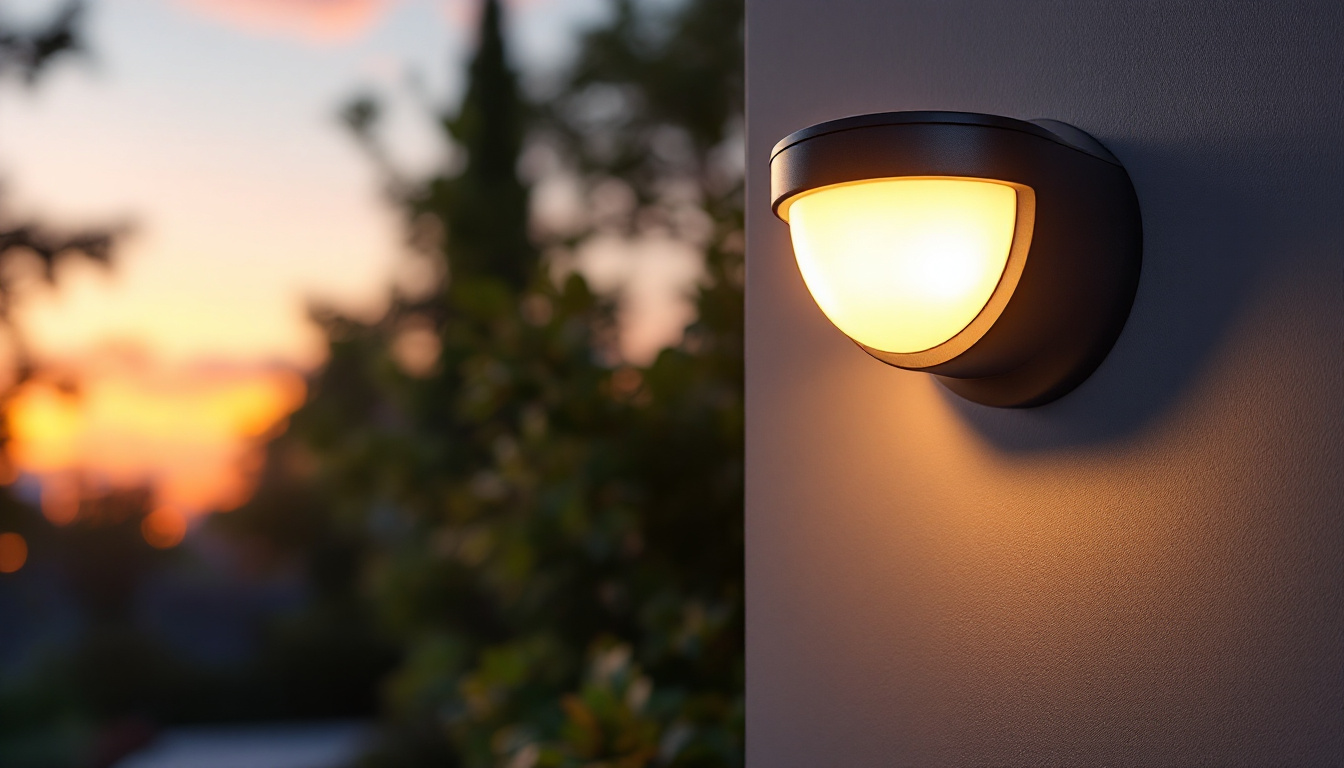
For lighting contractors, selecting the right electrical outlets is more than just a routine task—it’s a critical component that directly impacts the safety, functionality, and longevity of lighting installations. Electrical outlets serve as the connection points for lighting fixtures and other electrical devices, making their quality and compatibility essential to avoid costly issues down the line.
Using substandard or incompatible outlets can lead to a host of problems, including electrical failures, increased maintenance costs, and even safety hazards such as electrical fires or shocks. In fact, industry reports indicate that a significant percentage of electrical failures in residential and commercial lighting installations stem from poor outlet selection or installation errors. This underscores the necessity for lighting contractors to be meticulous in their choice of electrical outlets.
High-quality electrical outlets ensure reliable performance under various load conditions and environmental factors. They are designed to meet stringent safety standards and often come with features like tamper resistance, weatherproofing, and surge protection. These features are especially important in commercial or outdoor lighting projects where outlets may be exposed to harsh conditions or frequent use.
Moreover, quality outlets facilitate easier installation and maintenance, reducing the likelihood of callbacks and enhancing client satisfaction. For lighting contractors, this translates into a stronger reputation and potential for repeat business.
In addition to safety and reliability, the aesthetic appeal of electrical outlets should not be overlooked. With the rise of modern design trends, outlets are now available in a variety of styles and finishes that can complement the overall look of a space. This is particularly relevant in high-end residential projects or commercial environments where design plays a crucial role in the client’s vision. Choosing outlets that harmonize with the lighting fixtures and overall decor can elevate the entire project, providing a seamless integration that clients will appreciate.
Furthermore, advancements in technology have led to the development of smart outlets that offer enhanced functionality. These outlets can be controlled remotely, allowing users to manage their lighting systems more efficiently. For lighting contractors, incorporating smart outlets into their projects not only adds value but also positions them as forward-thinking professionals who are attuned to the latest trends in home automation. This proactive approach can set contractors apart in a competitive market, showcasing their commitment to delivering innovative solutions that meet the evolving needs of their clients.
Despite the critical role of electrical outlets, many lighting contractors encounter recurring challenges that can compromise project outcomes. Understanding these common issues is the first step toward prevention.
One frequent problem is the incompatibility between electrical outlets and the lighting fixtures they support. This can arise from mismatched voltage ratings, plug types, or physical configurations. For example, using a standard outlet with a high-wattage or specialized lighting fixture can cause overheating or insufficient power delivery.
Ensuring compatibility requires contractors to carefully review the specifications of both the outlet and the lighting fixture, verifying voltage, amperage, and plug design before installation. Additionally, it is essential to consider the overall electrical load on the circuit to avoid overloading and potential circuit breaker trips. By conducting a thorough load calculation, contractors can ensure that all fixtures function optimally without risking damage or safety hazards.
Even the best outlets can fail if not installed correctly. Common installation errors include loose wiring, improper grounding, and failure to follow local electrical codes. Such mistakes can lead to intermittent power, electrical arcing, or even dangerous shock hazards.
Lighting contractors must adhere to best practices and industry standards during installation, including using appropriate tools, securing connections properly, and conducting thorough testing before project completion. Furthermore, ongoing education and training on the latest electrical codes and installation techniques can significantly enhance a contractor’s ability to deliver safe and reliable installations. Regular audits of completed work can also help identify and rectify any potential issues early on, ensuring long-term performance and safety.
Outdoor and industrial lighting projects often expose electrical outlets to moisture, dust, temperature extremes, and physical impact. Without adequate protection, outlets can corrode, short-circuit, or degrade prematurely.
Selecting outlets with suitable environmental ratings—such as NEMA or IP certifications—and installing protective covers or enclosures can mitigate these risks significantly. Additionally, contractors should consider the placement of outlets to avoid areas prone to water accumulation or heavy machinery traffic, which can further enhance the longevity and reliability of the installation. Implementing routine maintenance checks can also help identify wear and tear on outlets due to environmental stressors, allowing for timely replacements or upgrades before issues arise.
Proactive planning and informed decision-making are key to preventing outlet-related problems. The following strategies can help lighting contractors deliver safe, efficient, and durable installations.
Choosing a reliable electrical outlet store or supplier is foundational. Reputable suppliers offer products that comply with national safety standards and provide detailed product information and certifications. They also often provide technical support and guidance tailored to lighting contractors’ needs.
Building a strong relationship with trusted suppliers can streamline procurement and ensure access to the latest outlet technologies and innovations. Moreover, many suppliers offer training sessions and workshops that can enhance a contractor’s knowledge about new products and installation techniques, ensuring that they remain competitive in a rapidly evolving market.
Before selecting outlets, lighting contractors should perform detailed assessments of project requirements, including load calculations, environmental conditions, and client preferences. This comprehensive approach helps identify the most suitable outlet types and features.
For example, in a commercial retail space, contractors might prioritize tamper-resistant outlets with surge protection, while outdoor installations may require weatherproof, heavy-duty outlets. Additionally, assessing the aesthetic preferences of clients can lead to the selection of outlets that blend seamlessly with the overall design, such as decorative or smart outlets that can enhance both functionality and style.
Standardizing installation procedures helps minimize errors and inconsistencies. Contractors should develop checklists that cover wiring methods, grounding verification, outlet mounting, and post-installation testing. Incorporating training sessions for installation teams ensures everyone is up-to-date on best practices and code requirements.
Additionally, using specialized tools such as circuit testers and voltage meters can verify outlet functionality and safety before project handover. Implementing a peer review system where experienced electricians evaluate installations can further enhance quality control, ensuring that each outlet meets the highest standards of safety and performance.
Accurate documentation of outlet specifications, installation procedures, and inspections is crucial for accountability and future maintenance. It also demonstrates compliance with local electrical codes and industry standards, which can protect contractors from liability.
Maintaining organized records facilitates troubleshooting and supports warranty claims if outlet defects arise. Furthermore, creating a digital archive of project documentation can streamline future reference and enhance collaboration among team members, allowing for a more efficient workflow in subsequent projects. This practice not only aids in compliance but also fosters a culture of transparency and professionalism within the contracting team.
The electrical outlet market continues to evolve, offering lighting contractors new tools to enhance project outcomes and client satisfaction.
Smart electrical outlets equipped with Internet of Things (IoT) capabilities enable remote control, energy monitoring, and automation of lighting systems. These outlets can improve energy efficiency and provide valuable data for facility management.
For lighting contractors, incorporating smart outlets into projects can differentiate their services and meet growing client demand for connected building solutions. Furthermore, these smart outlets often integrate seamlessly with home automation systems, allowing users to control their lighting via voice commands or mobile applications. This level of convenience not only enhances user experience but also opens up opportunities for contractors to upsell additional smart home products, creating a more comprehensive service package.
Modern outlets increasingly include advanced safety mechanisms such as ground-fault circuit interrupters (GFCIs), arc-fault circuit interrupters (AFCIs), and tamper-resistant designs. These features reduce the risk of electrical hazards, particularly in residential and commercial environments.
Staying informed about these advancements allows contractors to recommend the safest and most compliant options to their clients. Additionally, the implementation of these safety features can significantly reduce liability for contractors, as they demonstrate a commitment to ensuring the well-being of clients and their properties. As safety regulations continue to evolve, being proactive in adopting these technologies can also position contractors as leaders in industry best practices.
With sustainability becoming a priority, outlets designed to reduce energy waste and support renewable energy systems are gaining traction. Features like low standby power consumption and compatibility with solar power systems align with green building certifications and client expectations.
Lighting contractors who adopt eco-friendly outlet solutions can contribute to environmental goals and enhance their market competitiveness. Moreover, many manufacturers are now producing outlets from recycled materials or using sustainable production methods, which can appeal to environmentally conscious clients. By promoting these eco-friendly options, contractors not only help reduce the carbon footprint of their projects but also position themselves as responsible stewards of the environment, potentially attracting a broader clientele who value sustainability in their purchasing decisions.
Electrical outlets are a fundamental yet often overlooked element in lighting projects. By prioritizing quality, compatibility, and proper installation, lighting contractors can avoid common pitfalls that lead to operational failures and safety issues.
Partnering with reputable suppliers, conducting thorough project assessments, adhering to rigorous installation protocols, and staying abreast of technological advancements are essential strategies for success. These practices not only ensure compliance with safety standards but also enhance client satisfaction and professional reputation.
Ultimately, a thoughtful approach to electrical outlet selection and installation empowers lighting contractors to deliver reliable, efficient, and safe lighting solutions that stand the test of time.
Ready to elevate your lighting projects with the highest quality electrical outlets and fixtures? Look no further than LumenWholesale, where we provide spec-grade lighting products at unbeatable wholesale prices. Our commitment to quality, affordability, and convenience ensures that you can confidently meet the demands of any project without the burden of inflated costs. With free shipping on bulk orders, LumenWholesale is your go-to source for reliable lighting solutions that align with the best practices outlined in this article. Discover the value and performance that set us apart by visiting Wholesale Lighting at the Best Value today.

Discover how lighting contractors can harness the power of solar panels and lamps to enhance their projects, reduce costs, and promote sustainability.

Discover how lighting contractors can streamline their Black Friday preparations with expert tips on selecting, purchasing, and installing Christmas lights efficiently.

Discover how motion-activated exterior light fixtures can transform your outdoor spaces by enhancing security and energy efficiency.

Discover the key insights lighting contractors need to meet client expectations for stairway illumination.